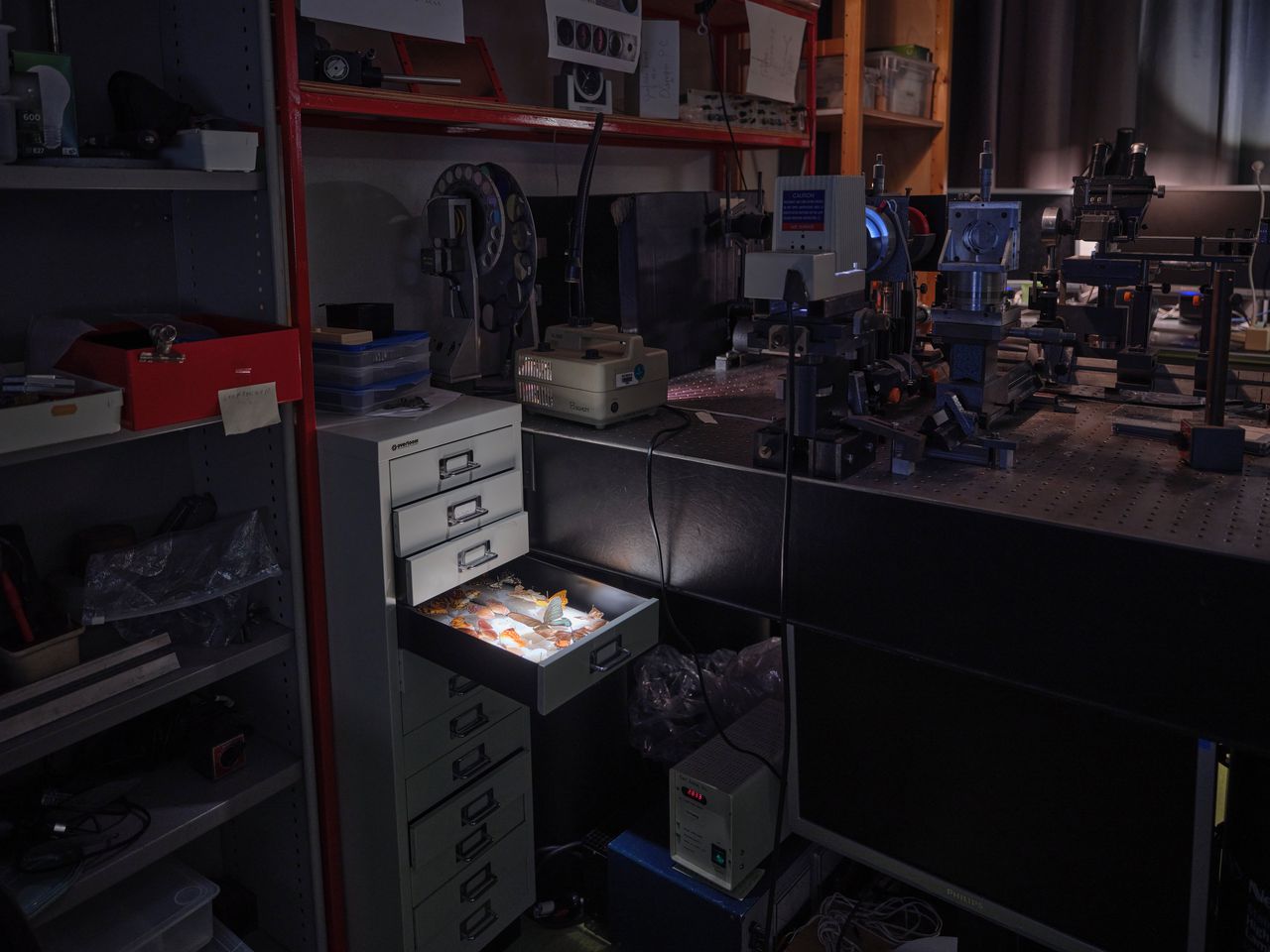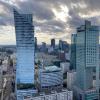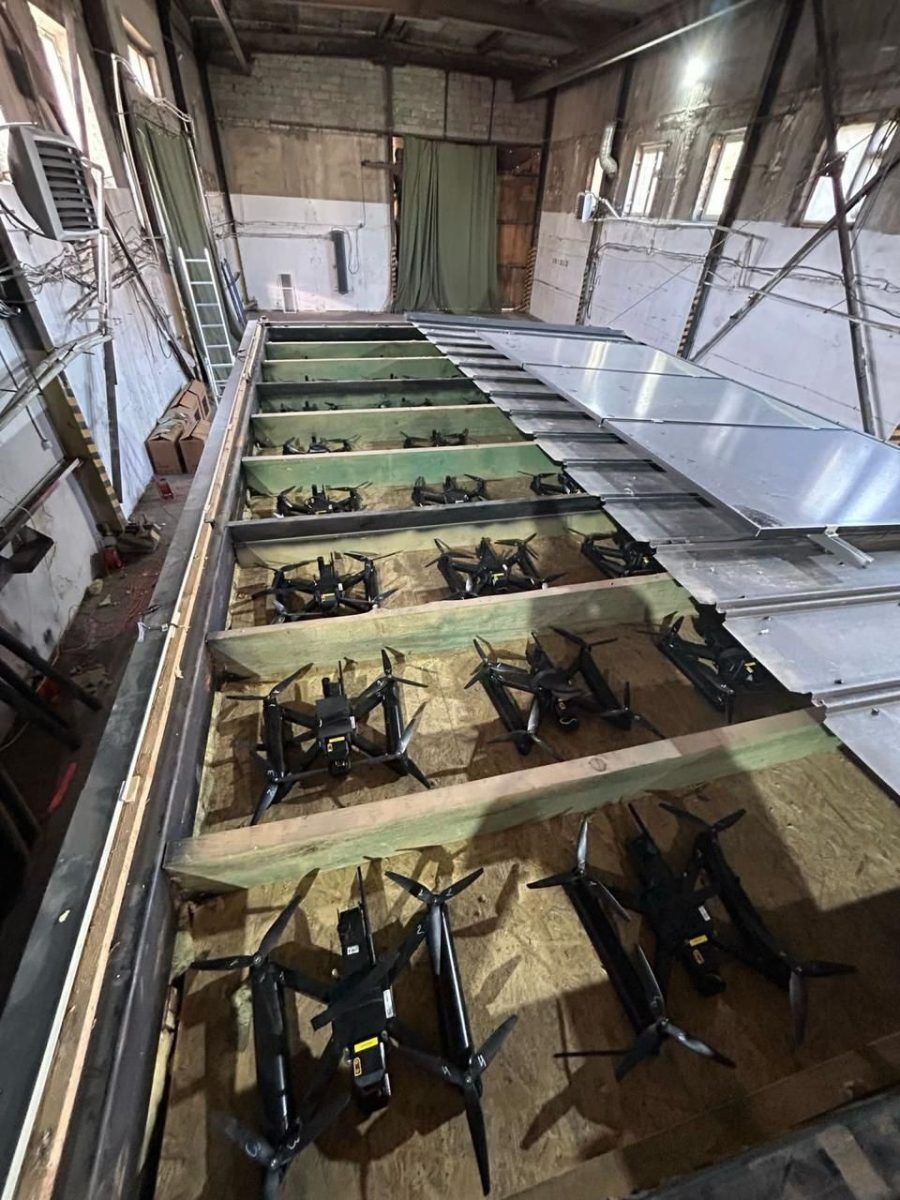Free newspaper at School for ‘Social Catching Race’ in Heerlen-Noord
:format(webp)/s3/static.nrc.nl/wp-content/uploads/2024/12/20123214/data125690560-fdc759.jpg)
One finger goes up like Monique Parren, journalist from The Limburgerasks if the students in this VMBO class (second year) know her newspaper. « He comes to grandma, » explains the only one who has heard of the newspaper.
Parrings were not beaten. She did not come to the Herle College in Heerlen-Noord to sell subscriptions. She is on a mission.
« Are you active on social media? » Asks PARREN. « And do you sometimes see things that you know is not right? » A girl mentions a video of « the Eiffel Tower on fire ». It is a nice step for pearls to talk to the class about how you can see if news is reliable, what the difference is between influencers and journalists, between Tiktok and the newspaper. « We should never put anything made up in the newspaper. We get paid to show how things really work. »
At these and other schools in Heerlen-Noord, PARREN and her colleague Tom Janssen give guest lessons to bring students into contact with journalism, the value of reliable information and the (digital) newspaper. In addition, they have now also made school newspapers at seven primary schools with students in groups 6, 7 and 8, in the design of The Limburgerbut with large, at the top of the front page the name of the school, instead of that of the newspaper.
Gullit, Rijkaard and Van Basten
The Limburger the two journalists have made it clear for these activities for four years. The newspaper, in collaboration with the National Program Heerlen-Noord, also makes three thousand free digital subscriptions available to the students and their parents, as part of the project of the neighbor.
That name refers to a childhood reminder of Ron Meyer. The former SP chairman is now director of the National Program Heerlen-Noordthat the quality of life in the district must improve and tackle problems in the field of poverty, education, housing and safety. Meyer grew up in a family that could not afford a newspaper. But when the neighbor had removed her newspaper, she stuck it through the hedge for her neighbor so that the little Ron could read to her heart’s content about Gullit, Rijkaard and Van Basten – and soon about what else happened in the Netherlands and beyond. « That’s how I discovered the world, » he says now.
When he talked about that experience with editor -in -chief Bjorn Oostra van van The Limburger (just like NRC Part of Mediahuis) arose the idea for the project with the free newspapers for Heerlen-Noord. In that neighborhood, 20 percent of adults are low -literate, 28 percent of families depend on the assistance and many children grow up in families without having to follow the news. Meyer does not consciously use the word ‘disadvantaged neighborhood’. « This area is working on a social catch -up race, » he would rather say, to avoid the stigmatizing term. « And proud is the fuel of that catch -up race. »
I was a bit shocked by how many teachers also don’t read newspapers
A great idea, the implementation turned out to be unruly in practice. « You would think that those three thousand free subscriptions would be ‘sold out’ in no time, » says Meyer. « But that’s not how it works. If you offer people something free of which they don’t see what its value is in their lives, then you don’t get along with it.
« If you think you are there by placing free newspapers in community centers or libraries, then you live in a different galaxy. This way you do not reach the people you are about. We soon realized that we had to focus on the next generation, on the children. The parents can then learn a bit of how many teachers do not read any newspapers. »
The difficult start was an important lesson for PARREN. « When we started this, I knew that there is a lot of low literacy. But what that means for people, you only experience when you have more contact with them. If you are busy keeping your head above water every day, then the newspaper may not be your first priority.
« While, if you are informed, you can make better decisions in society, and you can better prepare your children for life in the outside world. In addition to language and literacy, there are also involvement in the neighborhood and local democracy spearheads of this project. But you should not tell people here how to live.
« There are many prejudices about journalism here. Like the other way around there are many prejudices about a neighborhood like Heerlen-Noord. Everyone is in their own bubble. You hear a lot about the gap in society, but I say it is a ravine. Together we have to bridge that to restore trust. »
/s3/static.nrc.nl/wp-content/uploads/2025/05/29103537/data132931294-845a25.jpg)
Exploding solar panels
And so Parren and her colleague went to the schools in Heerlen-Noord, with their plan for the guest lessons, the school newspapers, the free digital subscriptions and also 125 paper subscriptions for use in the classes. But the schools initially did not receive them with open arms.
« I was enthusiastic about the idea, but I also thought: there is so much to the school, » says Patty van ‘t Hoofd, director of the small primary school Child Center Paulus, in the poorest neighborhood of Heerlen where many children have low language skills. « We choose to focus our program on basic skills such as reading and writing. »
But Van ‘t Hoofd sees how the newspaper increases the world of the children and that they therefore better understand what they read, because their general knowledge has been developed more. « We have given the newspaper a place in the classroom. »
You hear a lot about the gap in society, but I say it is a ravine
How that looks turns out in group 7/8. « Often children ask me during the break: can I do the newspaper today, » says teacher Claudia Daniëls-Janssen. Because every day it is a different pair to find out an article in the paper newspaper together. They must, under the heading news of the day!, Make a summary on a poster, whereby they must also mention the difficult words and the reason why they have chosen this article. « They then present that poster to the entire class. »
For two girls who are turning today, one more than one head bigger than the other, the news of the day is: number of fires in which solar panels explode. They have stuck a photo from the newspaper.
« It is very interesting and many people have solar panels, » the smallest explains their choice. The other says that in the sense ‘the fire brigade is increasingly confronted with fires’, which they have taken from the newspaper, does not understand the word ‘confronted’. After the teacher has explained that, she makes a group discussion by asking who has solar panels at home and what they serve for. And what does class think that they can explode? « Dangerous! » It sounds from several mouths.
Today a second duo can present his version of an article. They have opted for a piece about a customs officer who has provided information to a drug criminal. « Interesting news, » is their motivation, « because someone who works at customs is not allowed to give this kind of information. » « But, » a student with journalistic curiosity wonders in the connecting class conversation, « did that man work at customs to pass on that information, or did the drug criminal go to Hém? »
The tangible paper
Editor -in -chief Bjorn Oostra van The Limburger It calls his « social duty to ensure that people who do not have access to journalism, who can have in the future. » The newspaper of the neighboring fold, he assures, is « no marketing stunt ». It is « a long -breath project ». Since last year, more than seven hundred of the three thousand subscriptions that are available for free have been activated – « and they are also used. »
Monique Parren, a journalist for 34 years, is convinced that the project of the neighbor not only helps the students, but also makes her and her colleague better journalists. « We write stories that we would not have written otherwise. We now have a better picture of a neighborhood like Heerlen-Noord. » Ron Meyer says: « I would award every journalist to experience something like that. I call in editors in other cities to do such a project. »
But is a newspaper, in the era of social media, not a medium from yesterday? Meyer denies that: reliable information will always be the need, whether it is on paper or digital. « And we discover with this project: it not only helps language skills, but also reinforces citizenship, because you learn about your own environment through the newspaper. »
About the paper school newspapers who make the students with pearls and her colleague, he says: « The tangible of the printed paper is something extra for the students, from which they are proudly borrowing. It is precisely because it is something different than the world they know and take for granted – those on the phone. »
Read also
Why Heerlen-Noord Wilders remains faithful, despite a broken promise

/s3/static.nrc.nl/wp-content/uploads/2025/06/01170719/web-0106SPOverstappen.jpg)

/s3/static.nrc.nl/images/gn4/stripped/data133101536-0efed2.jpg)



